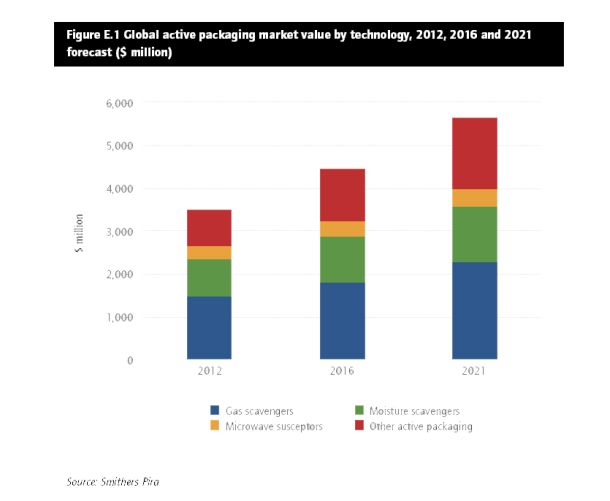Trends in consumer engagement will lead to the rapid rise of smart packaging solutions as costs become more manageable for brand owners.
A new report by packaging industry researcher Smithers Pira predicts the global smart (active and intelligent) packaging market will grow in value at an annual rate of 7.5 per cent to about A$10 billion before 2021.
Active packaging is an extension of the protection function of a package and is commonly used to protect against oxygen and moisture.
Intelligent packaging is an addition of the communication function of traditional packaging, and communicates information to the consumer based on its ability to sense, detect, or record external or internal changes in the product's environment and information about the status of the product.
“The high cost of active and intelligent packaging has always been a factor restraining growth, particularly since cost-competitiveness is a key determinant of success in the retail industry,” said David Platt, author of the report.
“However, smart packaging technology providers are getting the unit cost of smart tags and labels down and raising their performance.”
The global active packaging market value is forecast to grow during the five-year period to 2021 at an annual rate of 4.9 per cent to A$7.5 billion, while intelligent packaging is forecast to grow at 18 per cent per annum to almost A$2.6 billion.
Developments in printed electronics, Cloud computing and the Internet of Things drive the adoption of intelligent packaging technologies, whereas active packaging is a relatively mature market in comparison.

According to Smithers Pira, the growing consumer concern regarding food waste and food safety can be met by both active and intelligent components.
Active technology can now routinely double the effective shelf life of many perishable products, while intelligent packs offer clear signals about the condition of the product, removing the need for arbitrary ‘best before’ labels.
Smithers’ research shows that brand owners now want useable products, not just a technology or component, that add real value to their brand, rather than short-term marketing gimmicks.
They also want to see active and intelligent packaging developers working together, and also collaborating with design houses and packaging manufacturers, to provide total finished solutions.







